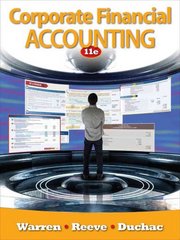Question
QUESTION 1 The newly qualified accountant of Parmesan Limited is busy finalizing the financial statements of the company for the year ended 28 February 2019.
QUESTION 1
The newly qualified accountant of Parmesan Limited is busy finalizing the financial statements of the company for the year ended 28 February 2019. Unfortunately, the accountant only remembers a few statements stated by his university lecturer as the venue in which the lecture took place was newly painted and he felt that watching the paint dry was likely to be more exciting than listening to an accounting lecture.
He only remembered the following three statements:
a) The objective of IAS 12 is to account for current and future tax consequences of the recovery of assets and liabilities in the Statement of Financial Position.
b) The tax base of an asset is:
- the amount that will be deductible for tax purposes against any taxable economic benefits that will flow to an entity when it recovers the carrying amount of the asset.
- if those economic benefits will not be taxable, the tax base of the asset is equal to its carrying amount.
c) The tax base of a liability is:
- its carrying amount, less any amount that will be deductible for tax purposes in respect of that liability in future periods.
- in the case of revenue received in advance, the tax base of the resulting liability is the carrying amount, less any amount of revenue that will not be taxable in future periods.
The accountant believes that he has a good grasp of the current tax consequences but does not understand what IAS 12 means by accounting for future tax consequences.
He has the following information available to him:



Step by Step Solution
There are 3 Steps involved in it
Step: 1

Get Instant Access to Expert-Tailored Solutions
See step-by-step solutions with expert insights and AI powered tools for academic success
Step: 2

Step: 3

Ace Your Homework with AI
Get the answers you need in no time with our AI-driven, step-by-step assistance
Get Started


